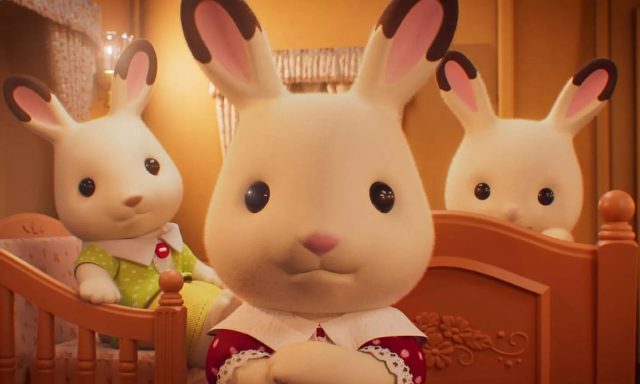
What does a feral dachshund have to do with a famous lioness? In Born Free, Joy Adamson told the story of Elsa, an orphaned lion cub, whom she raised and eventually returned to the wild as an adult. Just recently, Valerie the miniature dachshund turned Elsa’s story inside out, when she went missing from her pampered Australian life on a camping trip on Kangaroo Island, off the coast of Western Australia, more than 500 days ago. Long since given up for dead by her distraught Gen Z “dog parents”, Valerie has now been spotted after surviving for 18 months in the wild.
Would a movie about Valerie’s adventures be called Born Tame? Valerie, who stands six inches tall, spent the first year of her life being cosseted with treats and toys and woolly jumpers. And yet, having now spent longer in the wild than she did living in a household, she is reportedly “looking very healthy”. The couple are confident that it’s only a matter of time before she is recaptured. But what if she doesn’t want to go home? Josh Fishlock, Valerie’s purported owner, has told Australia’s Today programme that attempts to lure the dog back to captivity are not going well; every time someone tries to approach her she runs away.
No wonder; it sounds to me as though she’s living her best life. There’s something heroic about a creature that, bred to live as a pampered pet, has rediscovered enough of her canine instinct to survive for months in the Australian wilderness. In turn, Valerie’s unexpected wild flourishing shines a spotlight on our strange modern relation to pets: often radically denatured, anthropomorphic proxies for ourselves, or substitute babies, mostly or entirely denied opportunity to express their animal instincts.
Part of the problem is that we first invented childhood innocence, then grew to love it. But we have also, over time, turned this into an urge to stay innocent of the most poignant natural childhood fact: babies grow up.
Historians and curators are fond of observing that the idea of “childhood innocence” is a distinctively industrial-era invention: children were segregated away from adult activities when Britain began to be industrialised, and adult activity abandoned its mainly agrarian premodern setting. The first wave of compulsory education was initiated in the 19th century partly as a means of keeping young children out of factories.
As the poet Seamus Heaney illustrated in The Early Purges (1991), this enabled a shift in how children relate to animals. We think of animals as cute, furry, stroke-able, meriting care and protection. Heaney, by contrast, describes his childhood memories of witnessing animals being killed, as part of everyday life on a farm, and how he soon grew inured to the sight. Against this grim reality, he calls the urban fixation on “prevention of cruelty” a feature of cultures “where they consider death unnatural”.
Among such urban communities, in which the kind of death Heaney describes is no longer routinely visible, it has become possible to conceive of childhood as a kind of moral Eden, that children enjoy in the brief years before they learn about the harsh realities of life. And if it came to being with industrial urbanisation, this style of innocent kids’ content is still very much with us today, as illustrated in charming form by a new movie released next week. Based on the Sylvanian Families children’s toys, its plot could not be less arch, or perilous, or postmodern, or ironic, or in any other way postmodern or internet-poisoned. It’s about how Freya the Chocolate Bunny goes looking for a lovely birthday present for her mummy.
Sylvania perfectly illustrates both the industrial-era Eden of children’s innocence, and its denatured modern relation to animals. Sylvanians are wholly anthropomorphic, with animal heads but identical, humanoid bodies. They are all the same size regardless of species, and there’s no sense of predator/prey relations. Meanwhile, as proxies for our human lives, the message they convey is both charming and — by postmodern standards — very conservative. For if there’s no death in this Arcadia of trim cottages, well-kept pavements, and consumer abundance, sex is present — but only implicitly. Clothing in the playsets is meticulously gendered, and families are stubbornly heteronormative — not to mention very fecund.
It represents, in other words, a note-perfect toy version of the industrial-era idyll that held, at least in the world of children’s toys, until very recently. So given the post-industrial and post-modern turn in our culture, I was genuinely surprised to see Sylvania played so straight in the movie. For even as children have grown fewer, and child-substitute pets more numerous, so Toyland has reached ever further into adulthood — and, at times, become less innocent with it. Many children’s toy franchises now cater overtly for adult audiences too.
Much of this is innocuous enough, as for example LEGO’s “Creator” sets, or takes the form of ironic asides aimed at parents sitting through a favourite show for the umpteenth time. But there are also more unsettling spin-offs of children’s toys, that collapse the supposedly “safe” sex and death-free space of childhood, such as this PVC-clad Build-A-Bear with devil horns and dominatrix boots, or the sometimes fetish-tinged “Brony” subculture of adult male My Little Pony fans. So needless to say I was not just surprised, but relieved, to find Sylvania as clean and un-cynical as ever. But my surprise itself signals how fragile this sensibility now appears to be.
So what explains the influx of adult preoccupations and sensibilities into children’s toy franchises? When so many adults seem so fearful of “adulting”, and shy away from parenthood in favour of “fur babies”, perhaps it’s only to be expected that childhood innocence would extend. When we’re told that adolescence now stretches all the way from 10 to 24, you might think this would mean a longer period of innocence. And yet puberty has been getting steadily younger. Meanwhile, even if we still keep death mostly tucked carefully out of sight, sex seems to be everywhere — even wildly inappropriately “sexy” clothing for little girls.
The creep of adult preoccupations into children’s toys speaks more to this protracted adolescence than childhood as such. My own little girl is well into primary school, and whenever I imagine her stepping into this world, my overwhelming feeling is: “Please, no, not yet.” And yet, while I can do a little to slow the rush, I can’t stop it. Nor, it occurs to me, should I want to — at least not in every sense.
Recently, while teaching her to ride a bike, I was struck by how much easier pedalling away was for her, than letting go of the saddle was for me. She’d travelled 50 yards before she realised I wasn’t holding her; I meanwhile jogged behind, the emptiness in my hand like a 10-tonne weight. But what else can I do? There would be nothing kind or loving about wanting to keep her “safe” from the joy, fitness, and freedom that come with riding a bike.
And perhaps there’s another insight here, into why so many now seem to prefer a “fur baby” to the human kind. For it’s not that we want to extend childhood all the way to mid-20s. On the contrary: my surprise at the irony-free Sylvanian Families movie storyline points to the reality that Victorian-style childhood innocence is not expanding but shrinking. But what if the adult preference for “fur babies” reflects a yearning for children that won’t grow up? If “helicopter parenting” describes mothers and fathers who find it difficult to let go, perhaps “fur babies” are for adults so fearful of the bittersweet feeling of watching your baby grow up that they can’t bear to go there at all. Pets are not children — but at least they stay dependent and goofy forever. All, that is, except the ones who escape into the wilderness on a camping trip, and refuse to be recaptured.
So the unlikely flourishing of Valerie the sausage dog, reborn as a feral dachshund, could be read as a diminutive rebellion against Sylvania. But not in the sense of “modernising” Sylvania in accordance with adult proclivities, or some grievance studies script or other, so much as in defence of creatures having natural needs. Her vigorous health after 18 months of freedom on Kangaroo Island declares: “I may be small, but I’m not a toy or a fur baby. I’m an adult dog, and a predator.” I wonder: what will happen to Valerie if she’s captured but can’t adjust to the playpen and the knitted jumpers? I picture a sequel to Born Tame, in which she is tearfully returned, at long last, to her life as a wild dachshund. But however that story ends, it remains true that part of the nature of dogs, however domesticated, is still hunting. And the nature of children is to grow up.
Part of a mother’s love, then, must be judging when to let go. I tell myself this on a daily basis — and even so, the pride I feel at every milestone comes with a twinge of sadness. So I feel only grateful to Sylvanian Families for choosing to make a movie that hasn’t joined the rush toward modern extended adolescence. And doubly grateful that my little girl is still young enough to enjoy it.










Join the discussion
Join like minded readers that support our journalism by becoming a paid subscriber
To join the discussion in the comments, become a paid subscriber.
Join like minded readers that support our journalism, read unlimited articles and enjoy other subscriber-only benefits.
Subscribe